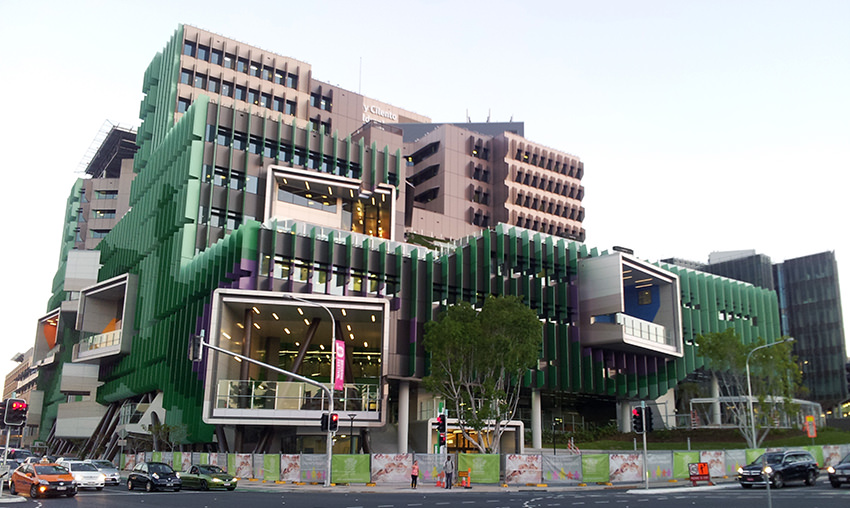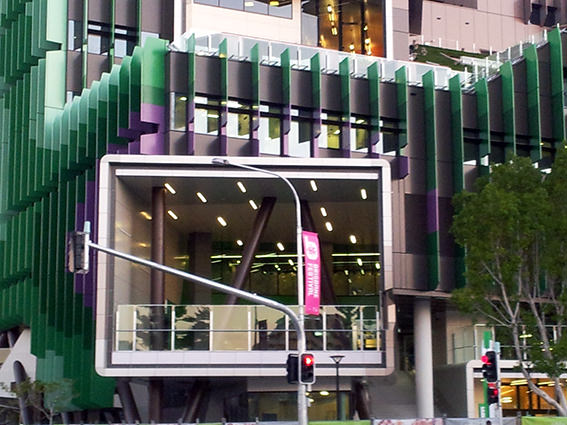Architecture and Healing

Architecture designed to help the healing process – a report on the ACA – Qld/NT site tour to Lady Cilento Children’s Hospital.
The ACA – Qld/NT site tour of the new Lady Cilento Children’s Hospital was a sell-out! Completed in July 2014, this state-of-the-art medical facility sets a precedent with its sustainable measures and fresh design ideas. Currently being used for training, the facility will be open for operational service at the end of the year.
In an innovative approach to medical and healthcare architecture, the project creates space that not only enhances its urban context, but also promotes a comforting, healing environment for its occupants.
The ground breaking hospital – a collaboration between Queensland architects Conrad Gargett Riddel and Melbourne-based Lyons – adopts a ‘small feel, big space’ approach. This ensures that, despite its size, the hospital remains scaled to the people inside. This means that its interiors do not have the feel of a traditional hospital.
The hospital’s occupants feel connected to the community and precinct through the large openings that join the public circulation arteries with the outside environment. These arteries or ‘branches’ also provide intuitive way-finding for those moving through the hospital and provide views and vistas to landmarks beyond the building itself. The horizontal branches, largely double height spaces, lead to two internal atria that supplement the natural light and air provided by the branches. These further aids in navigation by making destinations on other floors visible.
Clever use of colour and space create a child and family-friendly environment that doesn’t feel ‘institutional’, instead providing a stimulating place of work for staff. This design approach seeks to foster a healthy, positive experience for patients, families, carers and the people who work there.
A key objective for the project is its ‘green’ design, which includes sustainable strategies such as chilled beam air-conditioning, water harvesting and building materials selected for their reduced environmental impact. The roof tops too are an effective “green design ‘strategy with multiple rooftop gardens accommodated as the floor plate of the building reduces as it gets higher. This increases the landscape potential for this inner urban site and combines with the provision of external courts and street-scaping added to the precinct through the project.
The building’s facade is also designed to be environmentally responsive, providing effective control of solar penetration and glare, and making the most of daylight coming into the building. A new green space/urban park at the northern end of the hospital means the project will fir appropriately into its urban context, providing a new sense of place for this part of Brisbane.
Fast facts:
- $1.4B precinct redevelopment and $1.1B hospital excluding research facility
- LCCH is Australia’s largest paediatric health facility
- The joint Mater and QHealth project will cater for tertiary and quaternary services
- It is the hub of the state wide network of Children’s Health Services
- It has a total of 437 beds with provision for carers to stay in the patient rooms
- Potential of 20 theatres including MRI suites
- Total gross floor area of hospital exceeds 75,000 sqm


